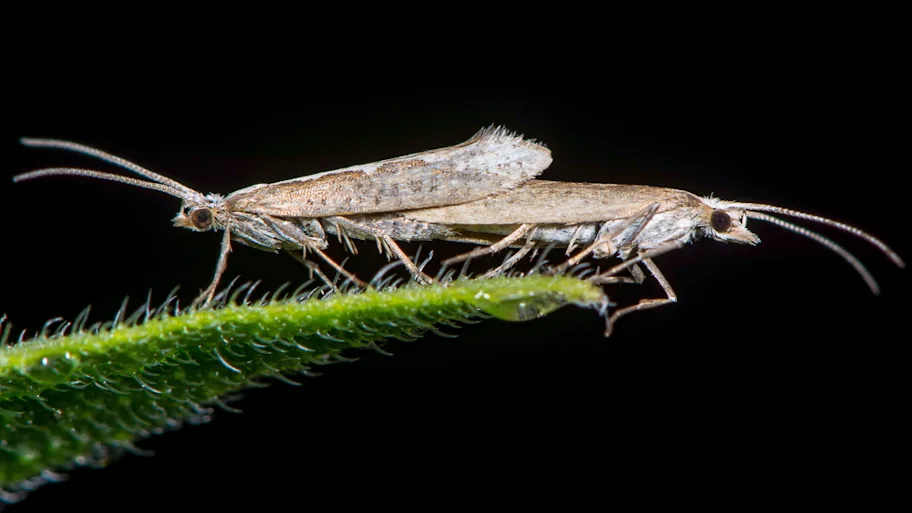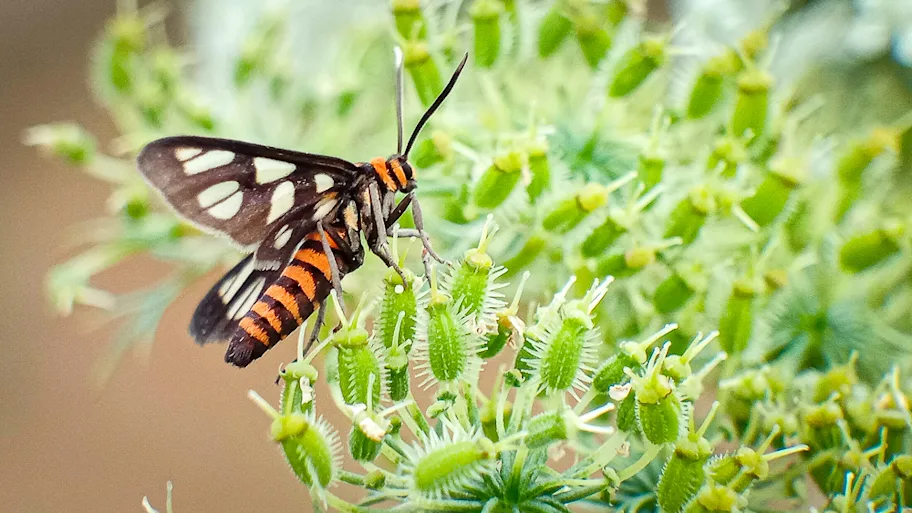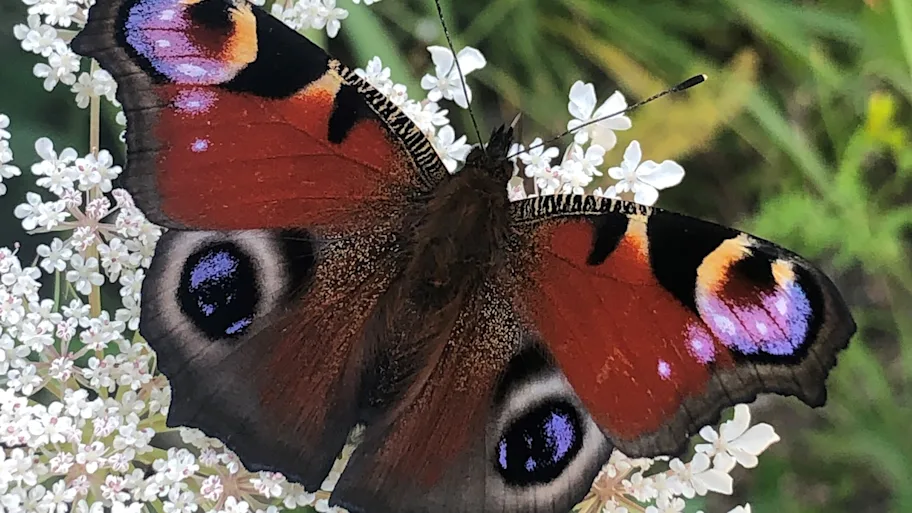
- Science News
- Life sciences
- Red light put moths in the mood
Red light put moths in the mood
By Maryam Clark and Mischa Dijkstra, science writers
Study show for the first time that dim red light activates olfactory gene pathways in the antennae of a model species, the yellow peach moth, increasing the sensitivity of males to female sex pheromones, and ultimately promoting reproductive behavior

Yellow peach moth, Conogethes punctiferalis. Image: Matee Nuserm / Shutterstock
Do you dim the lighting and turn on the red light for a romantic night in with your partner? It turns out moths aren’t so different in that regard. A new study published in Frontiers in Genetics shows that dim red light boosts sexual activity in a model species, the yellow peach moth Conogethes punctiferalis (family Crambidae), by selectively activating a genetic pathway related to olfaction in the antennae. This pathway ultimately makes males more sensitive to the odor of the female sex pheromone and thus more motivated to mate.
“We usually use red lights when working with our moths as prolonged white light can prevent them from mating,” says lead author Dr Wei Xiao, a scientist from Southwest University in Chongqing, China. “However, we realized that the moths laid more eggs when we shone red light during the dark phase of their daily light-dark cycle, and we wanted to determine the molecular mechanisms underlying this change.”
Download original article (pdf)
Odorant binding proteins (OBPs) are small proteins secreted by auxiliary cells surrounding olfactory receptor neurons in the antennae of insects. Xiao and colleagues first used quantitative PCR (qRT-PCR) to show that two OBPs, encoded by the genes CpunOB2 and CpunPBP5, are more abundant in the antennae of male C. punctiferalis exposed to medium-intensity (around 2 lux) red light than in antennae exposed to darkness or light with other wavelengths. The authors speculate that the relatively long wavelength of red light enables it to enter tissues and cells and there stimulates the expression of CpunOB2 and CpunPBP5 by a yet to be determined mechanism.
Xioa et al. then used another molecular technique, fluorescence binding assay, to show that these OBPs, when recombinantly expressed in E. coli bacteria, selectively bind to molecules that are known to be components of the moth’s female sex pheromone. With electroantennography, a technique that measures the electrical activity in antennae in response to stimuli, they went on to show that the antennae of males become more reactive to female sex pheromone after exposure to red light. Finally, they used behavioral experiments to confirm that the ultimate effect of red light on male and female C. punctiferalis is to stimulate mating and egg laying.
Xiao et al. conclude that for this species at least, dim red light is sufficient to cause olfactory receptor neurons in the antennae of males to become hypersensitive to components of the female sex pheromone, ultimately promoting reproductive behaviors in the adults moths.
Although the yellow peach moth itself isn’t endangered, Xiao’s study could potentially help to boost reproduction in at-risk species, or species that are economically important.
“Our study is the first to test the stimulatory effects of red light on mating behavior and is therefore a potential springboard for research into novel conservation techniques for endangered insects,” says Xiao.
Original article: Dim red light during scotophase enhances mating of a moth through increased male antennal sensitivity against the female sex pheromone
REPUBLISHING GUIDELINES: Open access and sharing research is part of Frontiers’ mission. Unless otherwise noted, you can republish articles posted in the Frontiers news blog — as long as you include a link back to the original research. Selling the articles is not allowed.






